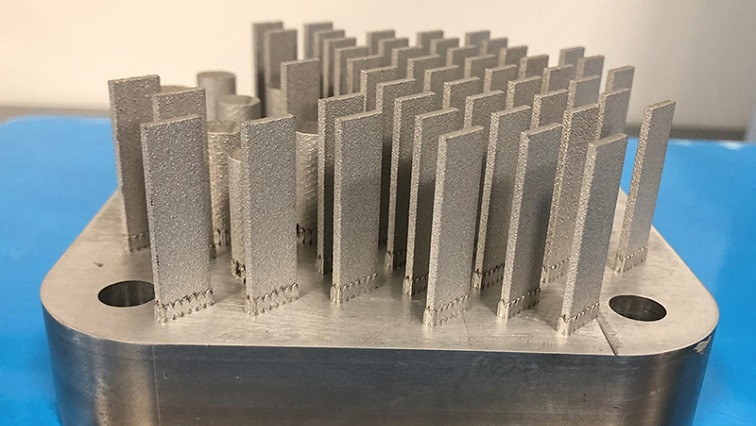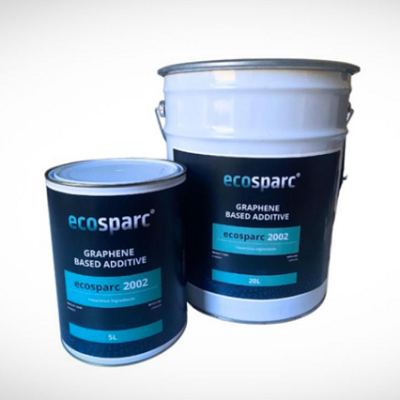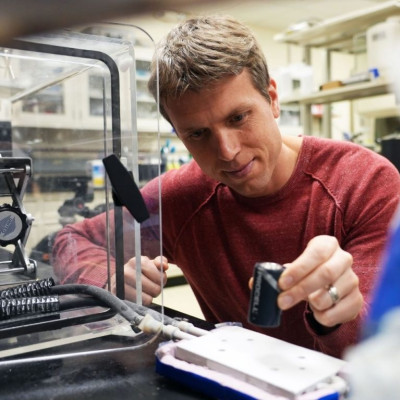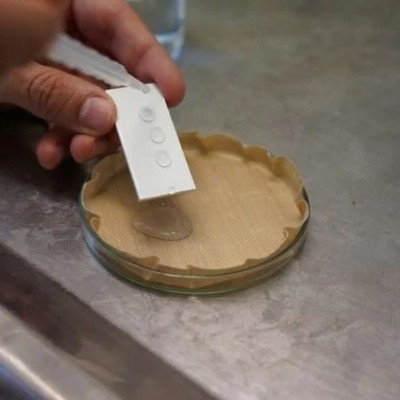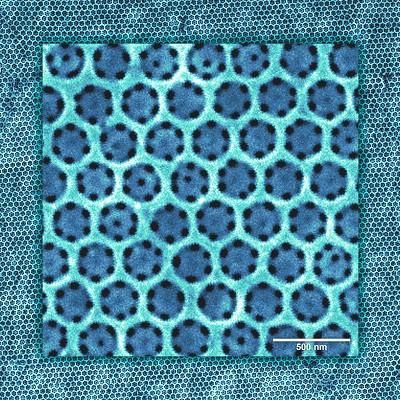Haiyan Wang and Xinghang Zhang lead a team that has introduced transition metals cobalt, iron, nickel and titanium into aluminum via nanoscale, laminated, deformable intermetallics. Wang is the Basil S. Turner Professor of Engineering and Zhang is a professor in Purdue’s School of Materials Engineering. Anyu Shang, a materials engineering graduate student, completes the team.
“Our work shows that the proper introduction of heterogenous microstructures and nanoscale medium-entropy intermetallics offers an alternative solution to design ultrastrong, deformable aluminum alloys via additive manufacturing,” Zhang said. “These alloys improve upon traditional ones that are either ultrastrong or highly deformable, but not both.”
Wang and Zhang disclosed the innovation to the Purdue Innovates Office of Technology Commercialization, which has applied for a patent from the U.S. Patent and Trademark Office to protect the intellectual property.
The research has been published in the peer-reviewed journal Nature Communications. The National Science Foundation and the U.S. Office of Naval Research provided support for this work.
Drawbacks of traditional aluminum alloys
Lightweight, high-strength aluminum alloys are used in industries from aerospace to automobile manufacturing.
“However, most commercially available high-strength aluminum alloys cannot be used in additive manufacturing,” Shang said. “They are highly susceptible to hot cracking, which creates defects that could lead to the deterioration of a metal alloy.”
A traditional method to alleviate hot cracking during additive manufacturing is the introduction of particles that strengthen aluminum alloys by impeding the movements of dislocations.
“But the highest strength these alloys achieve is in the range of 300 to 500 megapascals, which is much lower than what steels can achieve, typically 600 to 1,000 megapascals,” Wang said. “There has been limited success in producing high-strength aluminum alloys that also display beneficial large plastic deformability.”
The Purdue method and its validation
The Purdue researchers have produced intermetallics-strengthened additive aluminum alloys by using several transition metals including cobalt, iron, nickel and titanium. Shang said these metals traditionally have been largely avoided in the manufacture of aluminum alloys.
“These intermetallics have crystal structures with low symmetry and are known to be brittle at room temperature,” Shang said. “But our method forms the transitional metal elements into colonies of nanoscale, intermetallics lamellae that aggregate into fine rosettes. The nanolaminated rosettes can largely suppress the brittle nature of intermetallics.”
Wang said, “Also, the heterogeneous microstructures contain hard nanoscale intermetallics and a coarse-grain aluminum matrix, which induces significant back stress that can improve the work hardening ability of metallic materials. Additive manufacturing using a laser can enable rapid melting and quenching and thus introduce nanoscale intermetallics and their nanolaminates.”
The research team has conducted macroscale compression tests, micropillar compression tests and post-deformation analysis on the Purdue-created aluminum alloys.
“During the macroscale tests, the alloys revealed a combination of prominent plastic deformability and high strength, more than 900 megapascals. The micropillar tests displayed significant back stress in all regions, and certain regions had flow stresses exceeding a gigapascal,” Shang said. “Post-deformation analyses revealed that, in addition to abundant dislocation activities in the aluminum alloy matrix, complex dislocation structures and stacking faults formed in monoclinic Al9Co2-type brittle intermetallics.”
Read the original article on Purdue University.

